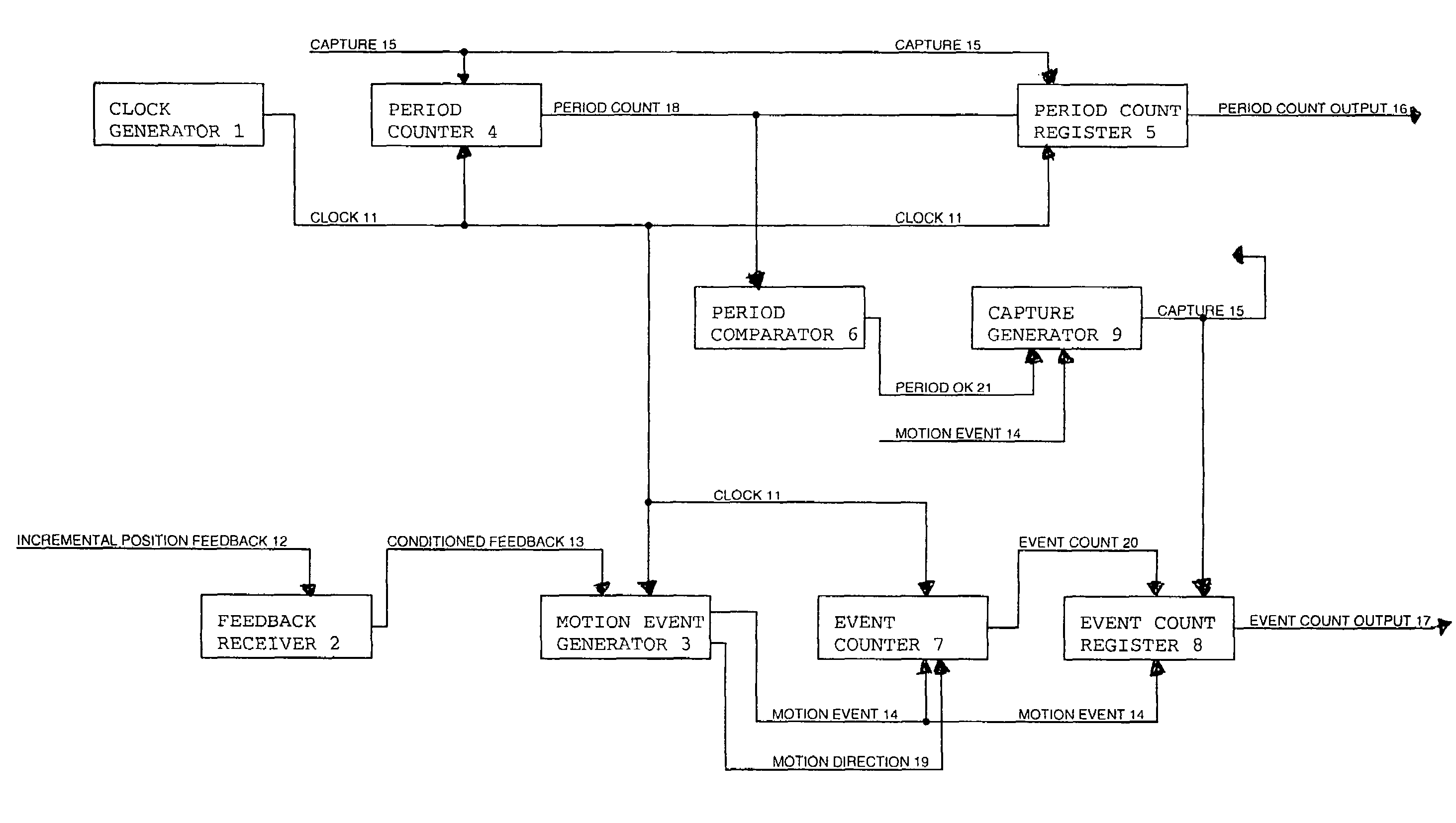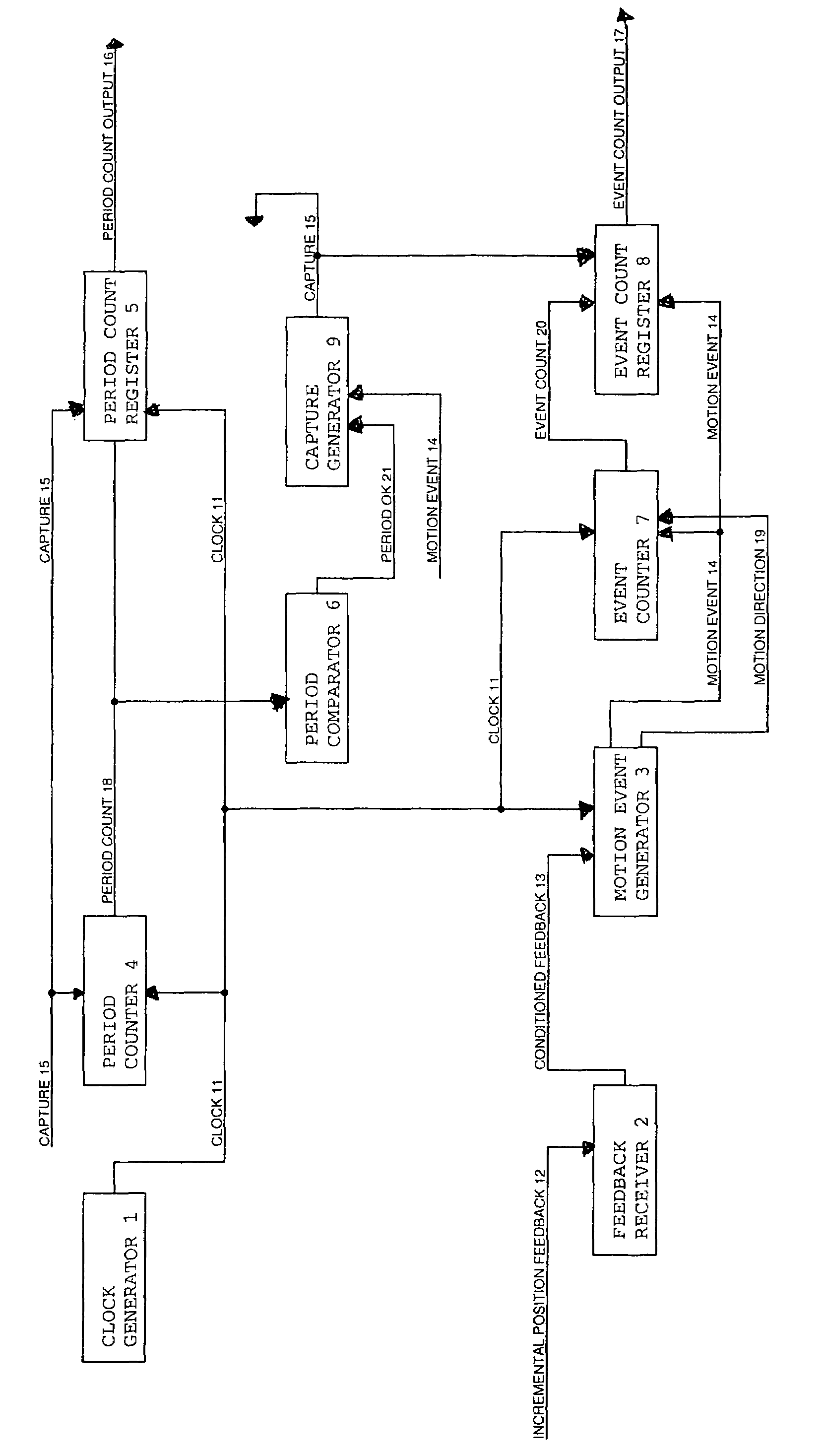Method of measuring discrete, incremental feedback from motion devices
- Summary
- Abstract
- Description
- Claims
- Application Information
AI Technical Summary
Benefits of technology
Problems solved by technology
Method used
Image
Examples
Embodiment Construction
[0027]The invention may be accomplished with the system depicted in the figure. Clock Generator 1 produces Clock signal 11. There are also one or more Incremental Position Feedback signal(s) 12 received by Feedback Receiver 2. Feedback Receiver 2 provides electrical conditioning and transformation of the incoming feedback signal(s). The output of Feedback Receiver 2 is Conditioned Feedback signal(s) 13. Conditioned Feedback signal 13 and Clock signal 11 connect to Motion Event Generator 3. The output of Motion Event Generator 3 is Motion Event signal 14, which is a signal that has a single pulse for every occurrence of a motion event indicated by Feedback signal(s) 12. Motion Event Generator 3 also outputs Motion Direction signal 19.
[0028]Clock signal 11 and Capture signal 15 connect to Period Counter 4, which counts up on every incidence of Clock signal 11 and resets to zero on Capture signal 15. The output of Period Counter 4, Period Count signal 18, connects to Period Count Regis...
PUM
 Login to View More
Login to View More Abstract
Description
Claims
Application Information
 Login to View More
Login to View More - Generate Ideas
- Intellectual Property
- Life Sciences
- Materials
- Tech Scout
- Unparalleled Data Quality
- Higher Quality Content
- 60% Fewer Hallucinations
Browse by: Latest US Patents, China's latest patents, Technical Efficacy Thesaurus, Application Domain, Technology Topic, Popular Technical Reports.
© 2025 PatSnap. All rights reserved.Legal|Privacy policy|Modern Slavery Act Transparency Statement|Sitemap|About US| Contact US: help@patsnap.com


